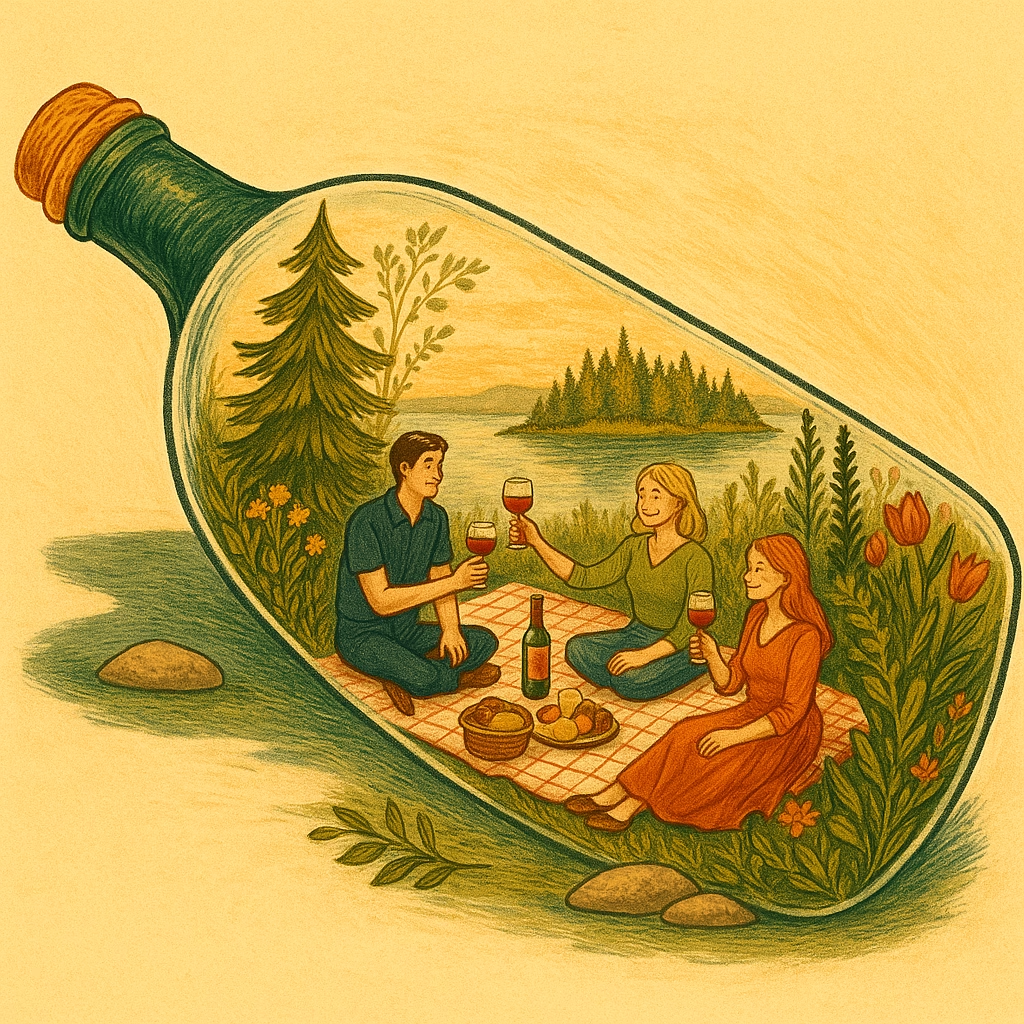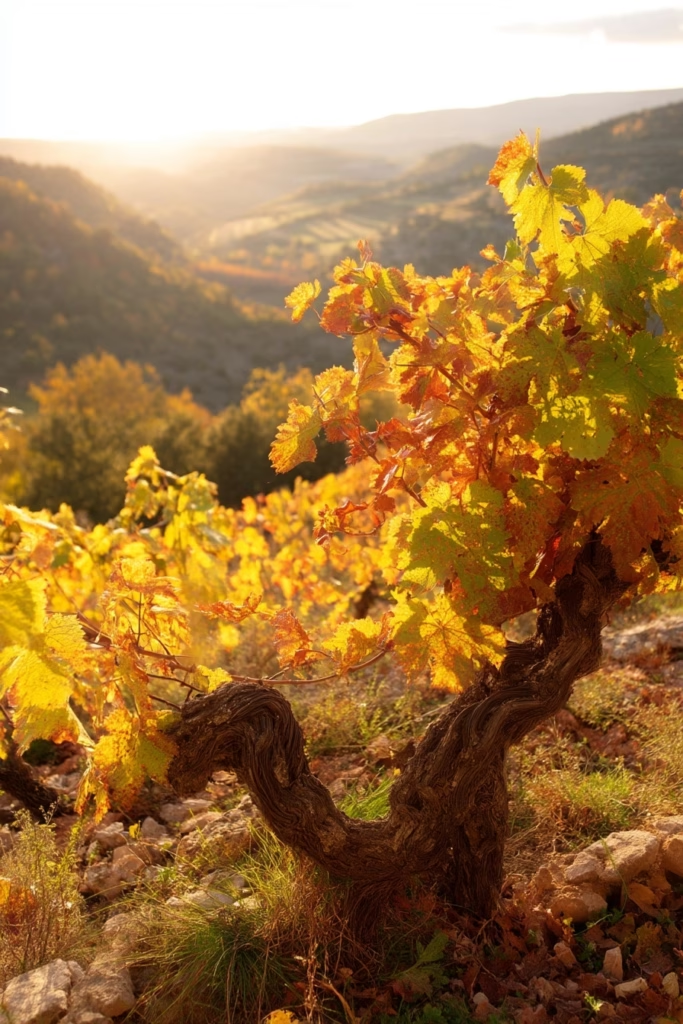Grenache: A Picnic in a Bottle
Juicy, generous, and vibrant, Grenache is the wine equivalent of an impromptu picnic—full of ripe red berries, wild herbs, and casual, fuss-free joy.

Juicy, generous, and vibrant, Grenache is the wine equivalent of an impromptu picnic—full of ripe red berries, wild herbs, and casual, fuss-free joy. Whether bottled solo or mixed into some of the world’s most beloved red blends, Grenache invites you to slow down, spread out a blanket, and sip on something that’s easygoing and exciting all at once. Like any great picnic, it’s meant to be shared, savored, and remembered.
A Wine With Its Heart on Its Sleeve: How to Spot Grenache in a Tasting
Much like spotting a picnic basket tucked under a shady tree, recognizing Grenache in a tasting is all about noticing the telltale signs of comfort and abundance. It announces itself with bold, inviting flavors and a warmth that feels like an embrace.

- Fruit Bomb Vibes: Grenache explodes with ripe red fruits—think bright strawberry, raspberry, and cherry notes. Sometimes a riper style may also show hints of dried fruit like figs or cranberries.
- Low to Moderate Tannin: Compared to Cabernet Sauvignon or Syrah, Grenache has much softer, smoother tannins.
- High Alcohol: When it comes to ABV, Grenache isn’t shy, often clocking in at 14-15% ABV or higher, and giving it a plush, warm mouthfeel.
- Light to Medium Color: Like a Pinot Noir, Grenache tends to be light to medium color in the glass, but don’t let the pale hue fool you—it can be surprisingly powerful despite its translucence.
- Subtle Herbal and Spice Notes: Look for white pepper, dried herbs (garrigue, especially for ones from the Southern Rhône Valley), and a whisper of cinnamon or clove.
- Medium Acidity: Grenache comes with enough zip to stay lively, but it’s generally softer than varieties like Pinot Noir or Sangiovese.
In short: If you’re swirling a glass that smells like strawberry jam dusted with herbs and feels warm and silky on the tongue, you might just be sipping Grenache.
From Vine to Picnic Basket: How Grenache Is Made
The beauty of a picnic is in the balance between planning and spontaneity—and Grenache is much the same. Its production can tilt toward pure fruit expression or layered complexity, depending on the winemaker’s vision.

- Traditional Winemaking: In its classic European homes (France, Spain, and Italy to name a few), Grenache is often fermented in concrete or neutral oak to preserve its juicy, picnic-fruit vibes. Minimal new oak means the wine stays fresh and aromatic.
- Old Vine Magic: Some of the most complex Grenaches come from old vines (50+ years), which produce fewer but more flavor-concentrated berries. Old vine Grenache can have more depth, complexity, and a wilder, almost savory streak.
- Whole Cluster Fermentation: Some producers opt to ferment whole grape bunches (stems included) rather than destemming. The addition of stems can add tannic structure and spicy notes to the resulting wine.
- Oak Influence: New World takes—especially in California or Australia—are likelier to use new oak, adding layers of vanilla, chocolate, and toast. This can make Grenache feel richer and more opulent.
One reason Grenache is beloved by winemakers? It’s a shape-shifter. It can produce everything from light, crunchy reds to full-throttle, powerful expressions—even fortified wines like Banyuls.
Chasing the Sun: Where Grenache Thrives
A perfect picnic needs a perfect setting—and Grenache needs the right climate to shine. It thrives under sunny skies and in warm, dry climates where its flavors can fully ripen without compromise.
- Southern Rhône Valley, France: This is Grenache’s spiritual home. In appellations like Châteauneuf-du-Pape, Gigondas, and Vacqueyras, it’s often blended with Syrah, Mourvèdre, and others to create rich, spicy wines with a savory edge.
- Spain: Here, Grenache (called Garnacha) is widely planted, especially in regions like Priorat, Rioja (where it’s often blended with Tempranillo), and Campo de Borja. Spanish Garnacha tends to show more earth, spice, and structure.
- Australia: Old bush vines in McLaren Vale produce lush, concentrated Grenache, often bottled solo or as part of GSM (Grenache-Shiraz-Mourvèdre) blends.
- California: From Paso Robles to Santa Barbara, Grenache thrives in California’s sunny climates. Here, styles range from light and bright to full and plush depending on winemaking choices.
- Sardinia, Italy: Known locally as Cannonau, Grenache here is often a little more rustic and herbal, sometimes touted for its health benefits thanks to higher levels of antioxidant compounds.
Grenache’s Many Picnic Outfits: From Single Varietals to Beloved Blends
No two picnics are exactly alike, and neither are two Grenaches. This grape transitions easily into different styles, each with a slightly different take on its signature levity.
- Single-Varietal Grenache: Especially popular in Spain and increasingly in Australia and California, these wines show off pure Grenache character—all strawberry fields and sun-warmed stones.
- GSM Blends: Grenache-Syrah-Mourvèdre blends are famous for balancing Grenache’s fruity openness with Syrah’s spice and Mourvèdre’s earthy structure. The Southern Rhône is the classic example, but Australia has mastered this style too.
- Châteauneuf-du-Pape: Technically, up to 13 grapes can be used here, but Grenache is almost always the star. These wines are rich, spicy, and age-worthy.
- Rosé: Grenache’s thin skin and vivid fruit flavors make it a natural choice for rosé, especially in Provence. Think pale pink hues, strawberry-watermelon notes, and a breezy seaside vibe.
- Fortified Wines: In Banyuls (a region near the French-Spanish border), Grenache is used to make sweet, fortified wines that are rich, nutty, and perfect with chocolate desserts.
The Final Sip: Pack Your Picnic with Grenache
Like a spring picnic, Grenache is pure, uncomplicated joy—but don’t mistake its easygoing nature for simplicity. Just as what you pack in your picnic basket can set the tone for an afternoon, with Grenache, it’s the little details that elevate the experience: the sun-ripened strawberries, the wild thyme on the breeze, the slight buzz of something a little stronger than lemonade.
Next time you’re looking for a wine that feels like a warm, lazy afternoon—where conversation flows as easily as the wine—grab a bottle of Grenache. It’s a picnic in a bottle, and everyone’s invited.



